
We were young. For the entirety of our friendship, my buddy John and I have shared the wild hills and waters of Arizona together. In our early 20’s John was suddenly captivated by bowhunting and soon after I caught the bug as well. When we first started trying our hands at archery hunting during our OTC deer hunts here, we swore off hunting coues whitetail deer. They were too hard, too jumpy, and way out of our reach given our limited bowhunting skills. Fast forward to present day and I have become obsessed with them. From their cagey nature to their beautiful coats, unique antlers, and second to none tasting meat. Hunting coues deer with a bow and arrow is the ultimate test for a bowhunter. While they are arguably the hardest animal to spot and stalk with a bow in North America, they are not impossible. Here’s a few proven tidbits of info I’ve gathered bowhunting the gray ghost through the years.
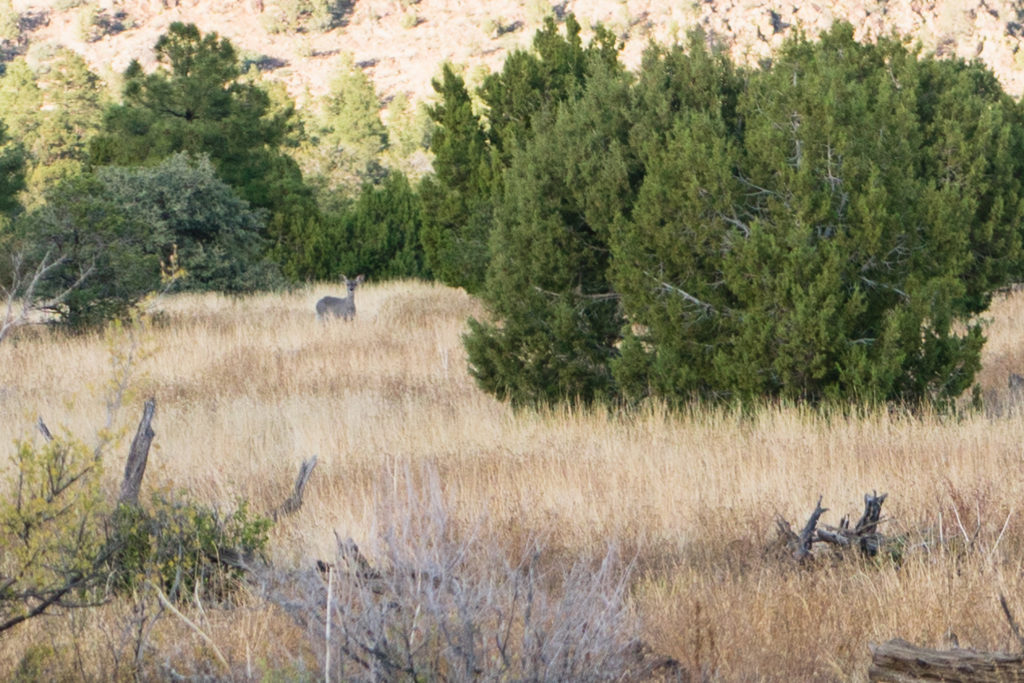
Any serious coues deer hunter will tell you the same thing. We live and die behind our glass. These deer are not called the gray ghost for no reason. It is a normal occurrence for them to literally melt into their surroundings, reappear, and then disappear once again. For this reason long hours of glassing are mandatory. A hunter will be best served mounting their optics on a tripod and carefully grid searching the surrounding country looking for any sign of a coues. When doing this, look for parts of deer, not a whole deer. Things like an ear, glint of an antler, or that classic white V of a coues deer’s backend. And if you’re not seeing anything, look again…
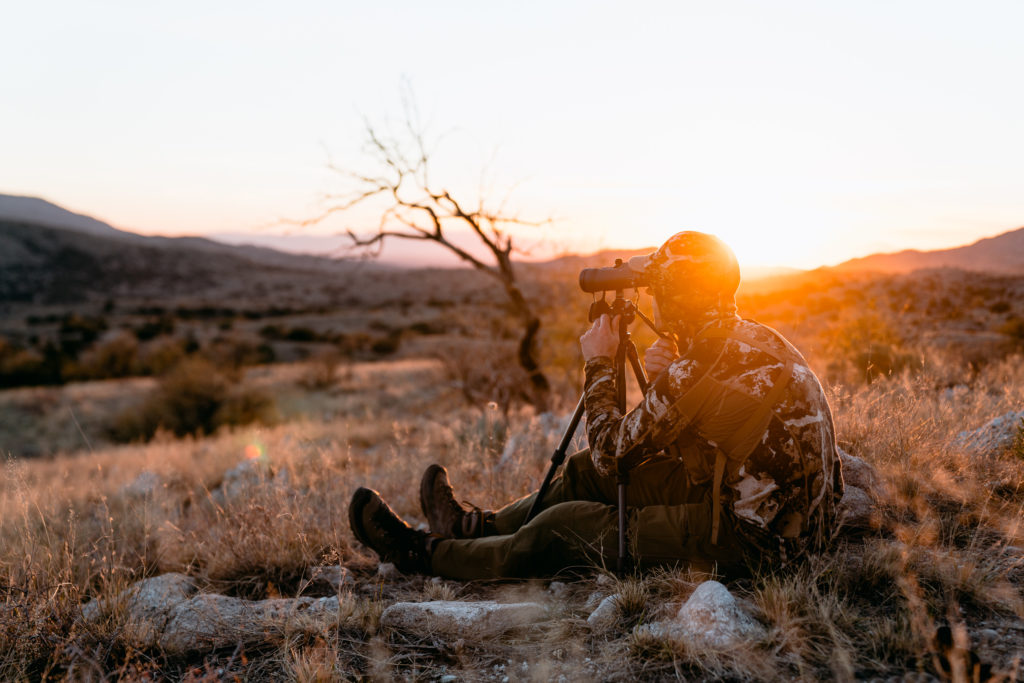
A proven method is to put the sun at your back in the morning and in front of you in the evening. This will leave you glassing warm sunlit hills at the start of the day and shade towards the end. Once the morning has passed, if you haven’t already seen deer, shift your glassing position to look more into shady pockets, especially if it’s warm. Another great setup I like is looking at a big east face with fingers coming down. This means that each one of those fingers will have a north and south face. Meaning that one could literally watch deer go from feeding to bedding all on the same face without having to shift around too much. With it being the rut though, deer will likely be up at all hours of the day as bucks won’t let the does rest for too long.

Once you do find a buck, the game really begins. Something that was extremely hard for me to get over when I started spot and stalk hunting coues was I was often gun shy of making a move. I always second guessed myself. Things would run through my head like “oh, what if they’re not there when I get there, I don’t know what the wind is doing on that hill, and I don’t think I’ve got time to go over there.” Aside from the majority, I make moves sooner than later on these deer, especially during the rut. The deer are being aggressive, so you need to be aggressive. This isn’t the early season. Take note of the wind, the general direction the does are moving, and get closer. Once I adopted that mindset, I started filling tags.
Bedding bucks down before stalking them is largely an early season tactic in my opinion. Yes, there are certain scenarios where one can be successful doing so during the rut, but the bucks simply don’t bed long. With their minds racing during breeding season, I’ve personally never really seen a buck bed for more than an hour. I will say, I’ve seen them bed for longer periods when they’re alone, but if there are does there, it seems like they’re up more often than not. So, if a buck is constantly moving on a walk and I can’t get to him in a timely manner, I’ll wait to see what he does. If he beds, I’ll make a go of it. Bedding bucks isn’t something I personally seek out to do though. When a buck is up and rutting, his attention is skewed, as are the does’ because of the chaos he is ensuing on the group. If they are bedded all they have to pay attention to is trying to stay alive. I say catch em with their pants down, literally.
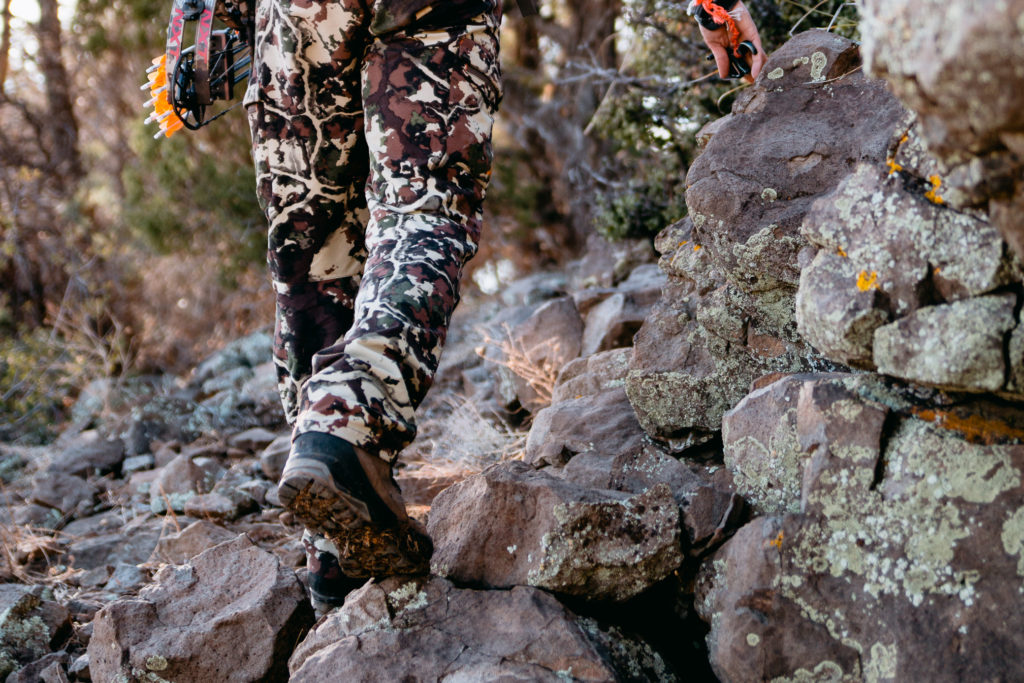
With all of that talk about aggression, I’ll say it again. You are trying to stalk arguably the hardest animal in North America with a bow. This needs to be taken into consideration when closing the distance. Be aggressive, but be calculated in your approach. Do not, I repeat, do not try and take shortcuts with these deer. You will fail. If that means taking the long way around to make sure you’re not seen, I’m sorry, but that’s what you need to do. A coues deer is so switched on it’s almost hilarious. I have personally witnessed them getting spooked from a gust of wind. A weird two legged critter like yourself doesn’t stand a chance without some forethought. Always take the stalking route that will lend to the highest degree of success and consider all things. The wind, noise from the ground you’ll be stepping on, and line of sight. Stay on top of this and you’ll up your odds significantly at arrowing a buck.
As you spend more time looking for coues deer and observing them, notice how habitual they are. Their home range is only about a mile. Coues deer love to walk in their own footsteps. I personally believe this is due to their overall paranoia. They find a core area that works for them, where they feel safe, and they stick with it. You’d be paranoid too if dang near every predator out there wanted to eat you. So, use this to your advantage. This is not just a spot and stalk hunt.
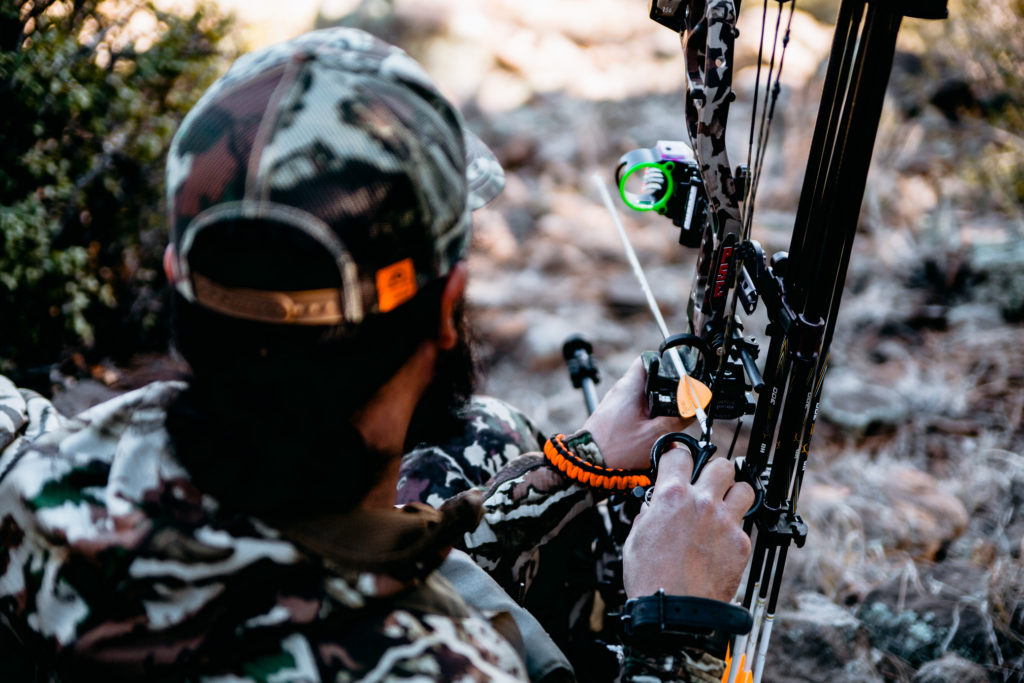
Coues deer are 100% ambush huntable. During the rut, bucks are running on and off all day long. Because of this, they are going to need water. So, a proven tactic during the rut is to sit water for bucks. My take on this is to find a few groups of does and keep tabs on them. As you’re doing that though, notate the main water sources in the area. The bucks will be where the does are and they will water the same.
Another great scenario is finding what I’d call a “buck ridge.” These are ridges that bucks will use to scent check doe bedding areas. Finding one of these gems is going to involve a fair bit of scouting to both know where the does are bedding, as well as to actually see the bucks in the act. Basically, the buck can work the top of the ridge with an uphill draft and it’ll let him know if a doe down beneath is ready to rock or not. These ridges are fantastic travel corridors to set up on. You’ll want to sit from sunup to sundown in these areas.
This next part is going to be somewhat controversial, but here goes nothing. I think one needs to cater their pre-hunt training to the country and animals they’ll be hunting, not the other way around. So, if you’re hunting steep and deep mountains way in the backcountry, you’re physical training needs to be top notch and reflect that. For coues deer? I’d highly suggest extending your effective shooting range. Pair their switched on nature with the loud, crunchy, oftentimes wide open landscape they call home, and you’re asking for a tall order to get a 20-30 yard shot. It’d be in your best interest to be proficient out to at least 60 yards for coues deer. And even better if you’re good out to 80 yards.

Let me clarify something here before we wrap this up. I’m not telling you to not try and get close. If you can, then go for it. The closest I’ve spot and stalked a coues successfully is 18 yards. The farthest successfully is 87 yards. Each situation you find yourself in is going to be different. For instance I would never take a long shot like 87 yards in high winds. That’s a great recipe for disappointment. A buck standing still that doesn’t know I’m there with no wind though? In a heartbeat. So, be honest with yourself here. Know your effective range, stick to it, and have confidence the arrow will find its mark.
Many of you might feel like dropping the “what’s ethical” bomb here. Hear me out though. Assuming we’re in a calm environment with an unwary animal, what’s more ethical? A hunter that can put 5 out of 5 arrows in a softball at 80 yards resting his pin on a deer at 70 yards? Or a hunter that struggles putting 5 out of 5 arrows in a softball at 30 yards resting his pin on a deer at 40? You tell me.
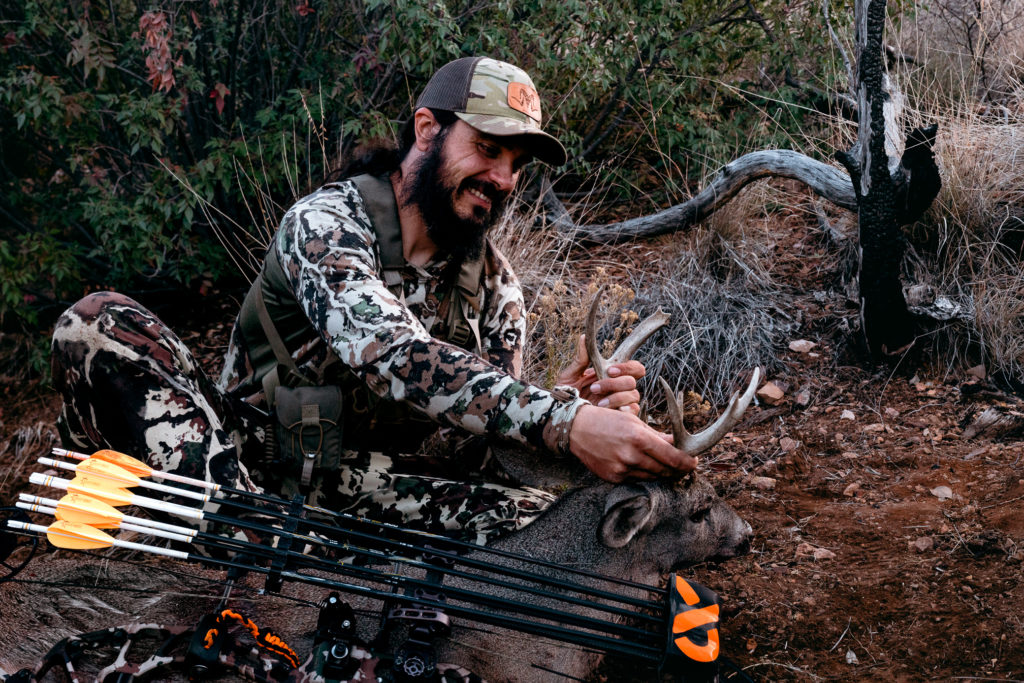
As I sit here and write this I’m about 2 weeks out from leaving on my next archery coues hunt. It’s going to be a backpack hunt in some incredible country with some incredible individuals and I absolutely cannot wait. What was once something I shunned in my younger years has now turned into an obsession rich with passion. These little deer sure are special and the only way anyone would truly understand that is to put themselves in the mix of them. Be careful though. The more time one spends bowhunting the gray ghost, the more of a chance they’ll haunt them for life…
To learn more about backpack hunting check out my book Becoming a Backpack Hunter!
As an Amazon Associate, I earn from qualifying purchases
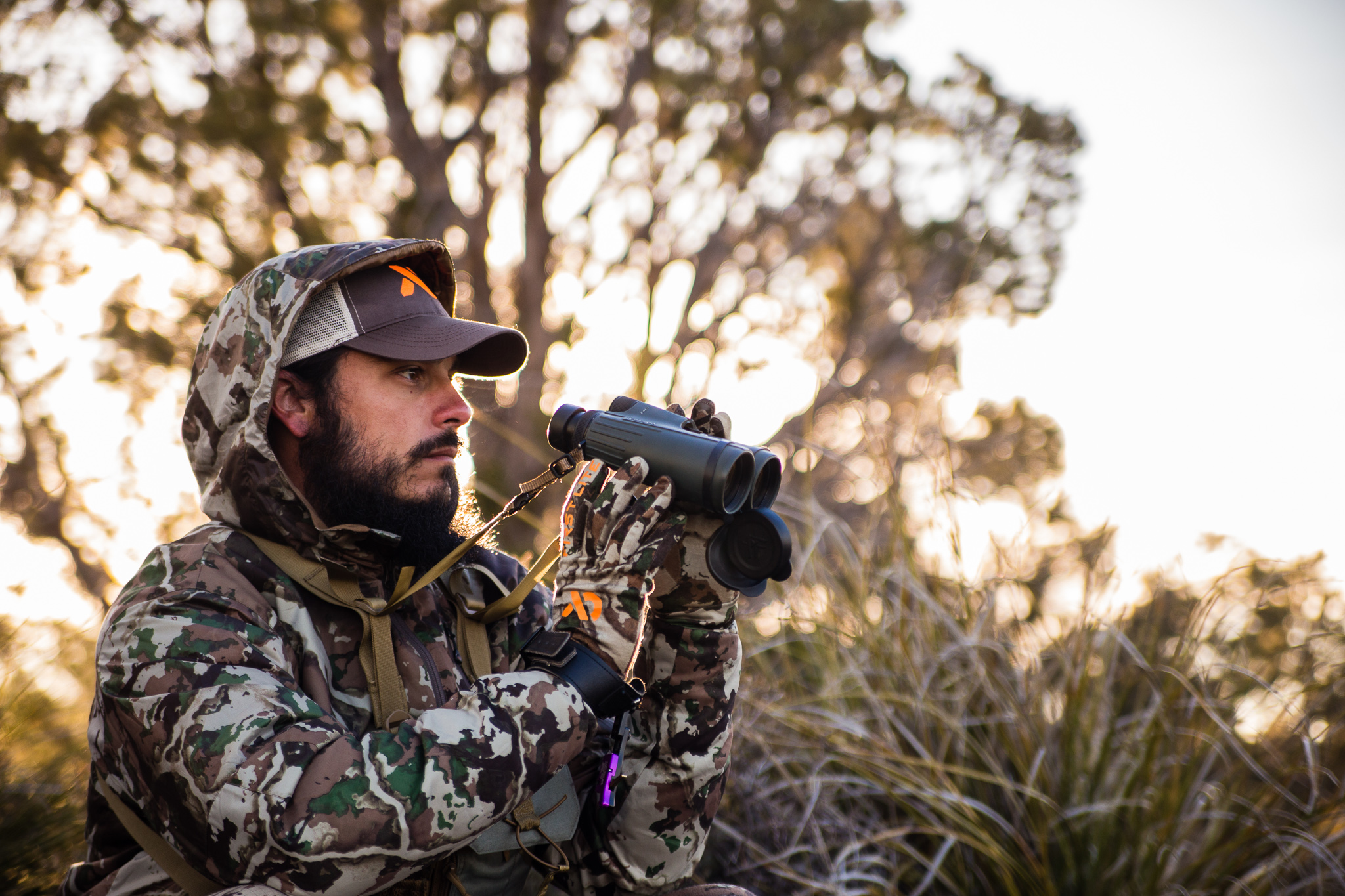

Copyright 2019 Dialed In Hunter
Design by NXNW.